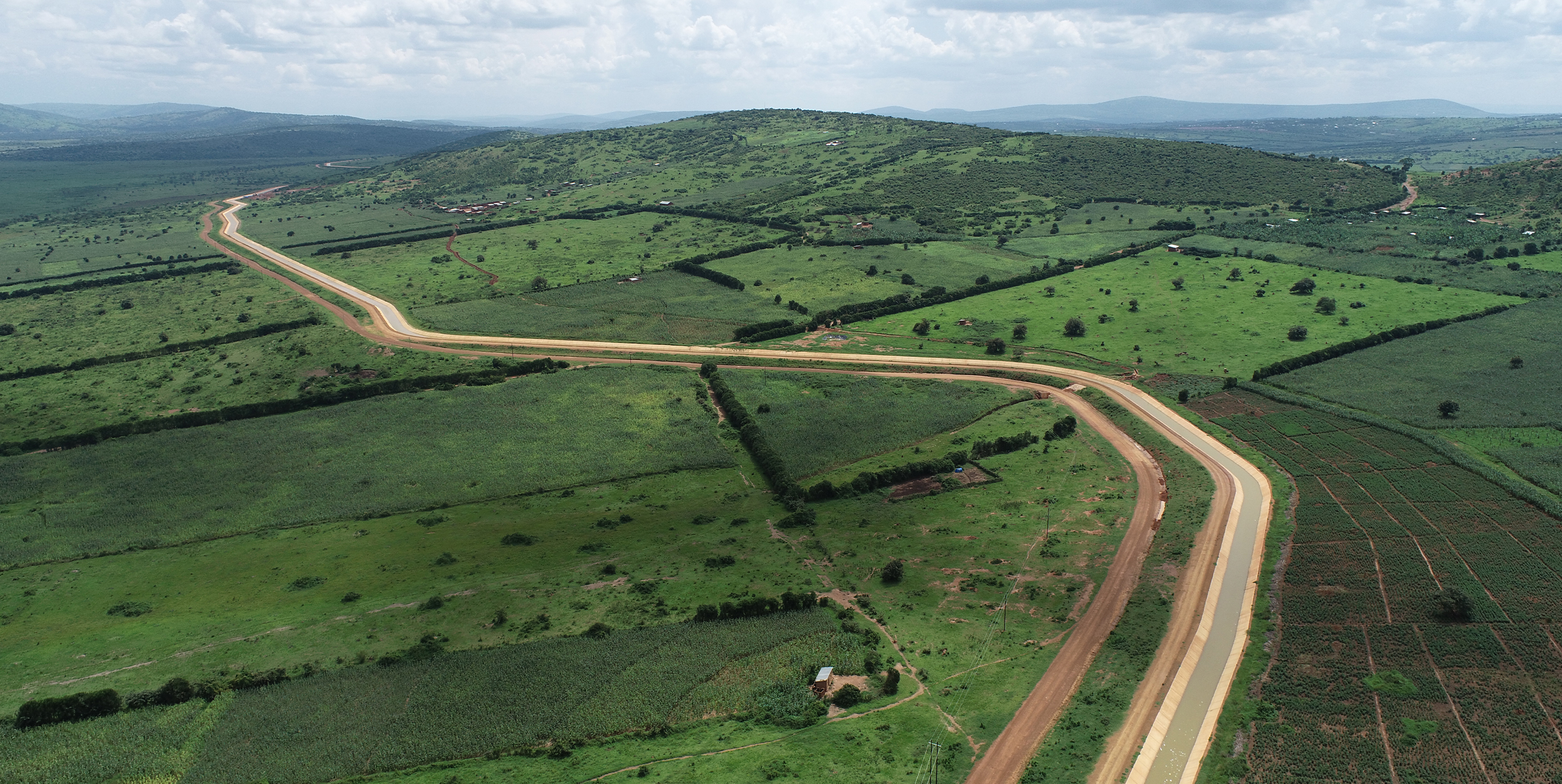
The first phase of this project which covers 5,600 hectares is set to be completed in April 2024 with potential to extend the system across 15,600 hectares. Six pumping stations have been built along with a 21-kilometer lined canal, which have been designed to support both current and future phases of the project. With environmental sustainability being a cornerstone of the whole GAH project, several measures have been taken to ensure minimal ecological impact, with borough areas being properly reinstated, and excavated areas being covered with grasses.
Investing in knowledge transfer and grass roots training
While transitioning to such advanced agricultural technologies in rural Africa may seem a daunting task, the project has faced minimal challenges due to government initiatives like water user associations. SMEC has engaged with these groups to support capacity building and training in irrigation techniques. Such initiatives help to ensure that the community can sustainably manage and operate the new systems once the project infrastructure has been built.
At the GAH SMEC has supervised the construction of a demonstration site with a training center. Doing so ensures that the community can fully leverage the advanced agricultural technologies that are being introduced. The training center will teach the locals to work with the equipment, how to handle materials and how to irrigate – ensuring that these technologies are accessible.
By ensuring that the knowledge and skills required to operate and maintain the new systems remain within the community, the reliance on external experts for everyday operations is reduced. Local agricultural capacities are also developed along with a sense of ownership, extending the benefits of the project well into the future.
Integrated value chain
GAH’s dedication to engaging the community in this pivotal project goes beyond a mere sense of ownership. A unique financial model is in place, where approximately 30% of the project’s land is dedicated to community use for local farmers.
On top of making agricultural activities a bright new economic opportunity for the region, the GAH has also made significant investments in local infrastructure. Three modern villages have been constructed where houses have reliable power supply, reliable water supply with roads, and cowsheds for livestock production, which directly benefits the existing community.
The development of these essential infrastructure like electricity and transport links not only support the development of the region in its agricultural activities, but also open the potential growth of allied industries like processing and distribution of agricultural products. The creation of this ecosystem around agricultural output will create a wide range of employment opportunities within the agricultural value chain, which will further expand economic activities in the region.
While the GAH project may primarily be an agricultural initiative, it is much more than that. It is a driver of transformation and serves as a truly balanced model for future sustainable and agricultural developments in the region.
A model for Africa’s Agri-future
The successful implementation of GAH’s first phase demonstrates that economic prosperity can be achieved in synergy with environmental protection. Negative ecological impacts have been minimised and meaningful engagement has taken place to prepare local farmers for the socioeconomic opportunities that will come with the completion of this project.
With the GAH, modern, efficient and environmentally friendly farming practices are on track to become a reality rather than a buzz topic. The intent is that Gabiro Agribusiness hub can become a benchmark to demonstrate that large scale irrigated agriculture can be viable, profitable and sustainable. This perspective shift from the local community will be vital for the long-term sustainability of agriculture and food security in Rwanda, ensuring that the sector continues to drive socioeconomic development for the country.
The Gabiro Agribusiness Hub is set to serve as a model for truly sustainable development, where it is possible for every stakeholder to win.












 Transmission in the Transition
Transmission in the Transition
Transmission Systems of the future need to rapidly adapt to the new world of sustainable energy. Grids need to expand to accommodate the growing new sources of clean energy and adjust to the variability and intermittency nature of such sources.
 Breaking Down Silos to Transform Transport Mega-Projects for a Sustainable Future
Breaking Down Silos to Transform Transport Mega-Projects for a Sustainable Future
Transport mega-projects are reshaping the future of urban mobility, driving innovations that enhance connectivity, support communities, and enable economic growth and sustainability. Through cutting-edge technology and large-scale infrastructure, these projects are transforming cities by reducing congestion, improving environmental outcomes and facilitating seamless travel.
 Rethinking Practice Global Evolution in Transportation Geotechnics
Rethinking Practice Global Evolution in Transportation Geotechnics
Transportation geotechnics forms the backbone of global infrastructure, supporting roads, railways, ports, and airports that drive economic growth and societal progress. As urbanisation accelerates and economies expand, the geotechnical challenges associated with constructing and maintaining resilient infrastructure have grown increasingly complex. The field must not only address capacity needs but also align with sustainability and resilience goals, making it more crucial than ever to innovate and adapt.
 Engineering positive change: delivering community-centric infrastructure in rural Africa
Engineering positive change: delivering community-centric infrastructure in rural Africa
Across the vast and diverse landscapes of rural Africa, many communities face significant barriers to accessing essential infrastructure. Limited access to clean water, sanitation, reliable transportation, and consistent energy supply impedes daily life, and deepens existing inequalities.




